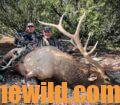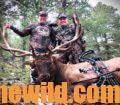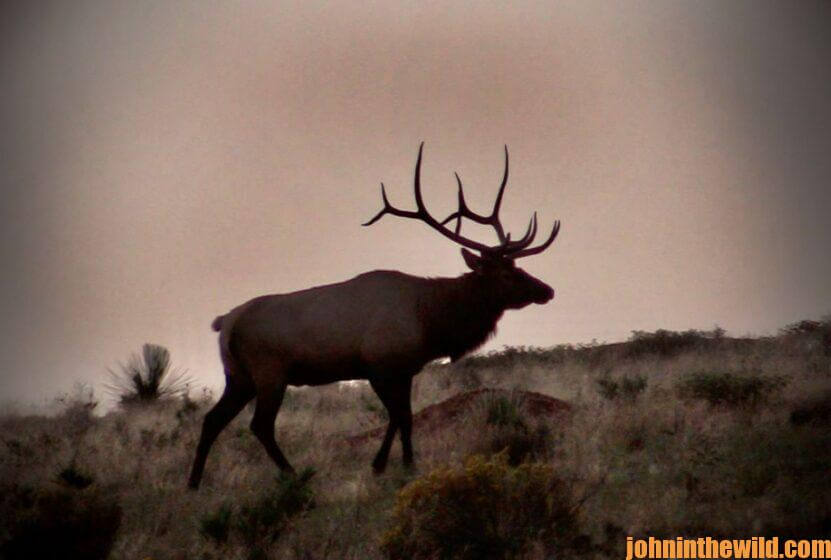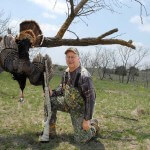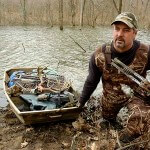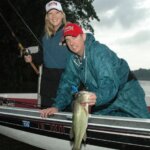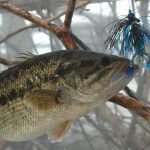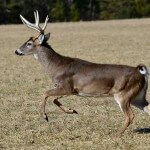Editor’s Note: For the last 20+ years, Ralph Ramos of Las Cruces, New Mexico, has called in a bull for himself or his clients every opening weekend, which is usually Labor Day weekend. Ramos has been hunting mule deer and elk in New Mexico for about 45 years. Archery season for mule deer and elk starts on September 1. All elk and mule-deer tags in New Mexico are assigned through a lottery system. You apply for a tag and then are notified if you’ve been drawn to hunt either of these two species. There are also private-property tags that can be purchased for mule deer. For elk, ranchers get authorization, and then you can buy a tag from the ranchers.
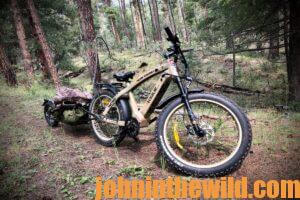
I like to reach the spot where I’ll start hunting from while the day’s still dark. I want to get ahead of any other hunter who may be hunting this same area. So, I’ll usually hike in at least a mile before I start calling. Or, I’ll ride my Rogue Ridge Grinder E-Bicycle https://rogueridge.com/, an electric assist bicycle, that enables me to go 25 miles in mountainous terrain or 75 miles off one charge on flat ground. I also have a trailer on the back of the bike with which I can take gear in and meat out. The bike allows me to ride in early with a light down a logging road for 2-3 miles into the area where I plan to begin hunting and arrive at my destination quietly.
I believe that one of the main reasons for my success in calling elk is because of the lanyard of elk calls that I wear around my neck. I like the Rocky Mountain Elk call made by Rockie Jacobsen (https://buglingbull.com/). I think he has some of the best diaphragm calls on the market, and I like his bugles too. They’re easy to use, and they sound like elk. Too, they fit my mouth really well, which is one thing you need to consider if you’re going to use a diaphragm mouth call. Don’t buy one that almost fits. Select a call that comfortably fits in your mouth. Believe it or not, various folks have different-sized mouths. So, if you’re going to use a diaphragm, get one that fits comfortably and works well for you. I use diaphragms to bugle and to cow call.
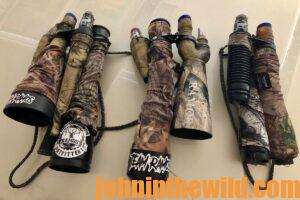 I’ve used Primos elk calls for a long time – probably 20 years – and I like the original Blue Reeds calls (https://www.primos.com/hunting-calls/elk-calls/). They’re easy to use, and they’ve proved in the field that they bring in bulls. I use Wayne Carlton’s diaphragms and reed calls, and his Resonator bugle tubes (https://www.nativebycarlton.com/). I like the Abe & Son elk calls (https://www.abeandson.com/store.php) because I feel like I can show more emotion with these calls than I can with other calls. They’re somewhat more difficult to learn to call with, but they sound good and are very realistic. I’ve also got the FoxPro resonator call. The reason I like this call is because it has a mechanical button on the resonator chamber that I can open and close. When I open the call, it sounds loud, and I can muffle it down to give a lighter, softer call. This call is probably the easiest call to use to vary the elk tones you give, and I can use it for bugling.
I’ve used Primos elk calls for a long time – probably 20 years – and I like the original Blue Reeds calls (https://www.primos.com/hunting-calls/elk-calls/). They’re easy to use, and they’ve proved in the field that they bring in bulls. I use Wayne Carlton’s diaphragms and reed calls, and his Resonator bugle tubes (https://www.nativebycarlton.com/). I like the Abe & Son elk calls (https://www.abeandson.com/store.php) because I feel like I can show more emotion with these calls than I can with other calls. They’re somewhat more difficult to learn to call with, but they sound good and are very realistic. I’ve also got the FoxPro resonator call. The reason I like this call is because it has a mechanical button on the resonator chamber that I can open and close. When I open the call, it sounds loud, and I can muffle it down to give a lighter, softer call. This call is probably the easiest call to use to vary the elk tones you give, and I can use it for bugling.
On my lanyard, I’ll have six calls wrapped up together to have the calls within easy hand reach. Having my calls lined-up, I quickly can move from one call to another. Because of the way I have my calls bundled, I can sound like a herd of different elk, both cows and bulls, by just moving my mouth from one call to the next call in the bundle. I think elk are sometimes like turkeys. Oftentimes they’ll react and bugle to one of those calls, when they may not bugle to any other call in my bundle.
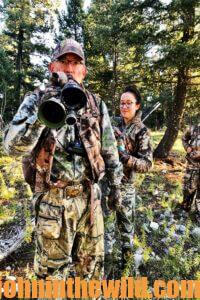 When I first reach the spot where I want to start calling, I’ll start off with a slow, soft calf call. That way if there’s an elk close-by, I probably can get him to bugle. If I don’t hear anything respond to the calf call, I’ll switch to a louder cow call. When I get that first bugle, I like to close the distance that my hunter and I are from the elk. If the elk is 300 yards from where I am, I want to move as quickly as possible to cut this distance we are from the elk to about 150 yards.
When I first reach the spot where I want to start calling, I’ll start off with a slow, soft calf call. That way if there’s an elk close-by, I probably can get him to bugle. If I don’t hear anything respond to the calf call, I’ll switch to a louder cow call. When I get that first bugle, I like to close the distance that my hunter and I are from the elk. If the elk is 300 yards from where I am, I want to move as quickly as possible to cut this distance we are from the elk to about 150 yards.
I don’t worry about the elk hearing me as I’m moving because elk are big animals. When they go through the brush over rocks or through timber, they make a lot of noise. So, if the bull has heard a cow call or bugle and answers that call, he expects to hear cows, calves and possibly bulls coming to him. As I move toward the bull, I’ll be calling with all the different calls, and usually he’ll keep bugling to let me know where he is. But when I get to within 200 yards of where I think the bull’s bugling, I like to set my hunter up to face the direction I think the bull will be coming from, and then back off 50-75 yards from where the hunter is. Then I can see him and the bull as he’s coming.
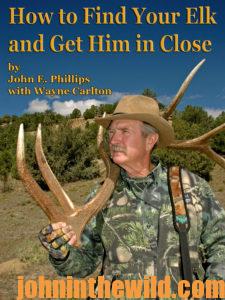 To learn more about elk hunting, check out John E. Phillips’ book, “How to Find Your Elk and Get Him in Close,” available in Kindle, print and Audible versions at http://amzn.to/17ENNqK.
To learn more about elk hunting, check out John E. Phillips’ book, “How to Find Your Elk and Get Him in Close,” available in Kindle, print and Audible versions at http://amzn.to/17ENNqK.
Also, watch for John E. Phillips’ newest deer book, “How to Hunt Deer Like a Pro: Volume II,” due out in print by October 1, 2022, and in Audible by November 1, 2022. You may have to copy and paste these clicks into your browser. When you click on this book, notice on the left where Amazon allows you to read 10% of the book for free. On the right side of the page and below the offer for a free Audible trial, you can click on Buy the Audible with one click.
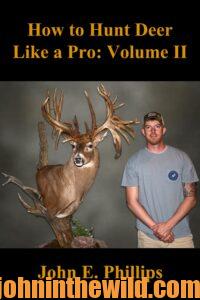
Tomorrow: Take Elk by Bowhunting

